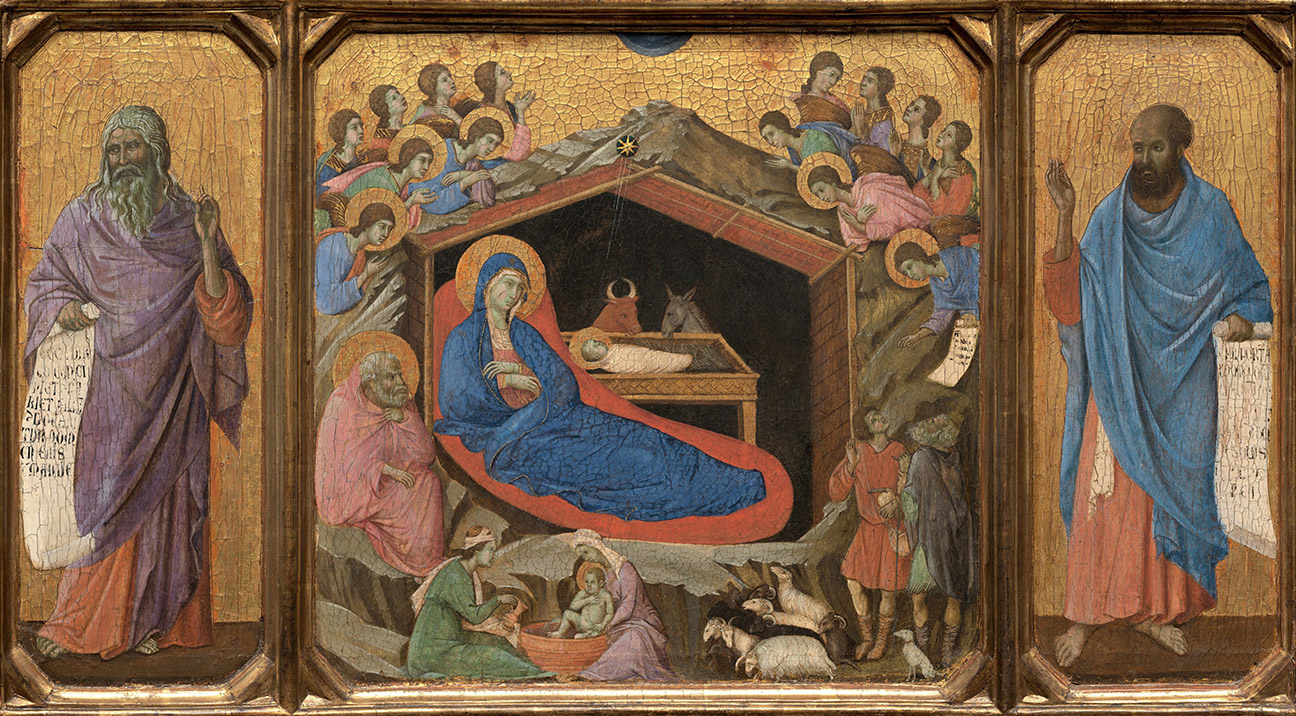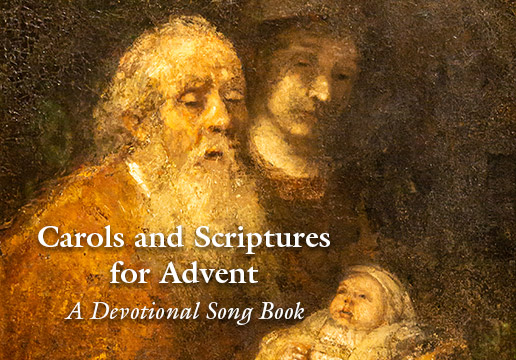
DECEMBER 14
View the Full Advent Calendar
O Come O Come Emmanuel
Artwork:
The Nativity with the Prophets Isaiah and Ezekiel by Duccio di Buoninsegna, (1308-1311) is a tempura on single panel and approximately twenty-eight feet wide and fifteen feet high. This particular work was donated to the National Gallery of Art in 1977 and is now in the Gallery Archives. Duccio’s depiction of the Byzantine style elegantly flowing lines are most apparent in the drapery folds.
Carol Text: John Neale, 1861;
Carol Melody: 8th C. Europe
Piano accompaniment by Lezlie Taguding
![]()
O come O come Emmanuel
And ransom captive Israel
That mourns in lonely exile here
Until the Son of God appear
Chorus
Rejoice rejoice Emmanuel
Shall come to thee O Israel
![]()
O come Desire of nations bind
All peoples in one heart and mind
From dust Thou brought us forth to life
Deliver us from earthly strife
![]()
O come Thou Rod of Jesse free
Thine own from Satan’s tyranny
From depths of hell Thy people save
And give them victory o’er the grave
“All this took place to fulfill what the Lord had said through the prophet: “The virgin will conceive and give birth to a son, and they will call him Immanuel” (which means ‘God with us’).”
- Matthew 1:22-23
Advent Devotional
Matthew knew his Scripture. He was well aware that in Scripture the name “Immanuel” first appears in Isaiah 7:14, which says, “Therefore the Lord Himself will give you a sign; The virgin will conceive, and give birth to a Son, and will call him Immanuel.” The original meaning of the name is: “with us is God,” or “God with us,” as seen in Matthew 1:23 above. And yet Mary and Joseph did not give their son the name Immanuel. Rather, they followed the directives given to them in Matthew 1:21 (Joseph in a dream) and Luke 1:31 (Mary by the angel Gabriel) to name Him Jesus. The promised child was given the name of Jesus but was also Immanuel, God in the flesh.
Originally in Latin, the song dates back over 1,200 years to monastic life in the 8th or 9th century. Seven days before Christmas Eve monks would sing the ‘O antiphons’ or ‘The Great O’s,’ to concentrate the mind on the coming Christmas, enriching the meaning using both Old and New Testament references intertwined. This canticle culminated the Great O’s concluding the advent. John Neal discovered the Latin form in the appendix of an early 18th-century manuscript and included it in his influential collection, Mediaeval Hymns and Sequences (1851). By singing this carol Christians today participate in a sacred Advent ritual at least 11 centuries old.
Our knowledge of and respect for Scripture is nurtured and cultivated when we learn these facts. God’s intricately woven tapestry of His presence in our lives is truly evident in His Word. He is our desire.
Prayer
Dear Lord,
I am more than humbled
by Your presence in my life.
You are my desire,
and I do await Your coming again…
finally.

Lynne Marie Kohm
Professor Lynne Marie Kohm serves as the John Brown McCarty Professor of Family Law at Regent University School of Law. She is the author of the books Estate Planning Success for Women and The Christian Guide to Wills, Living Trusts and Estate Planning. Her professional affiliations include and have included the Virginia State Bar Family Law Section Board of Governors, Virginia Bar Association Domestic Relations Council, Christian Legal Society, American Bar Association, Eagle Forum, Alliance Defense Fund, Concerned Women for America, and Bethany Christian Services. She and her husband have two children.



